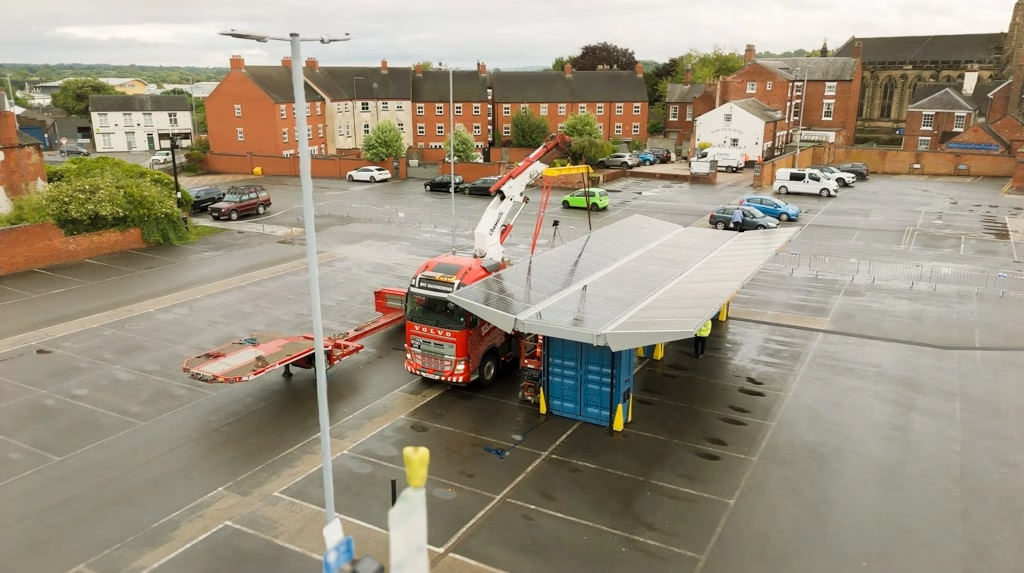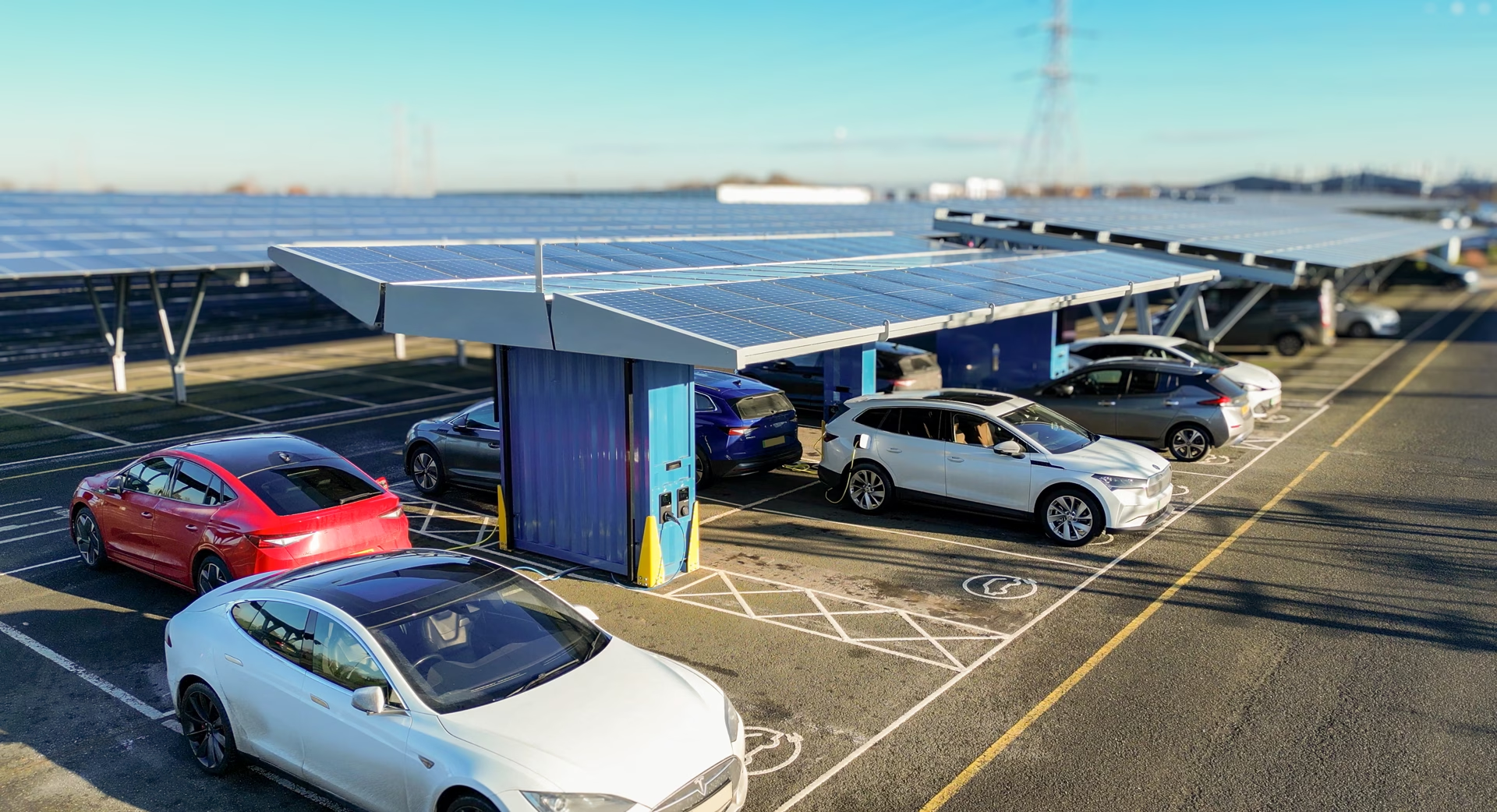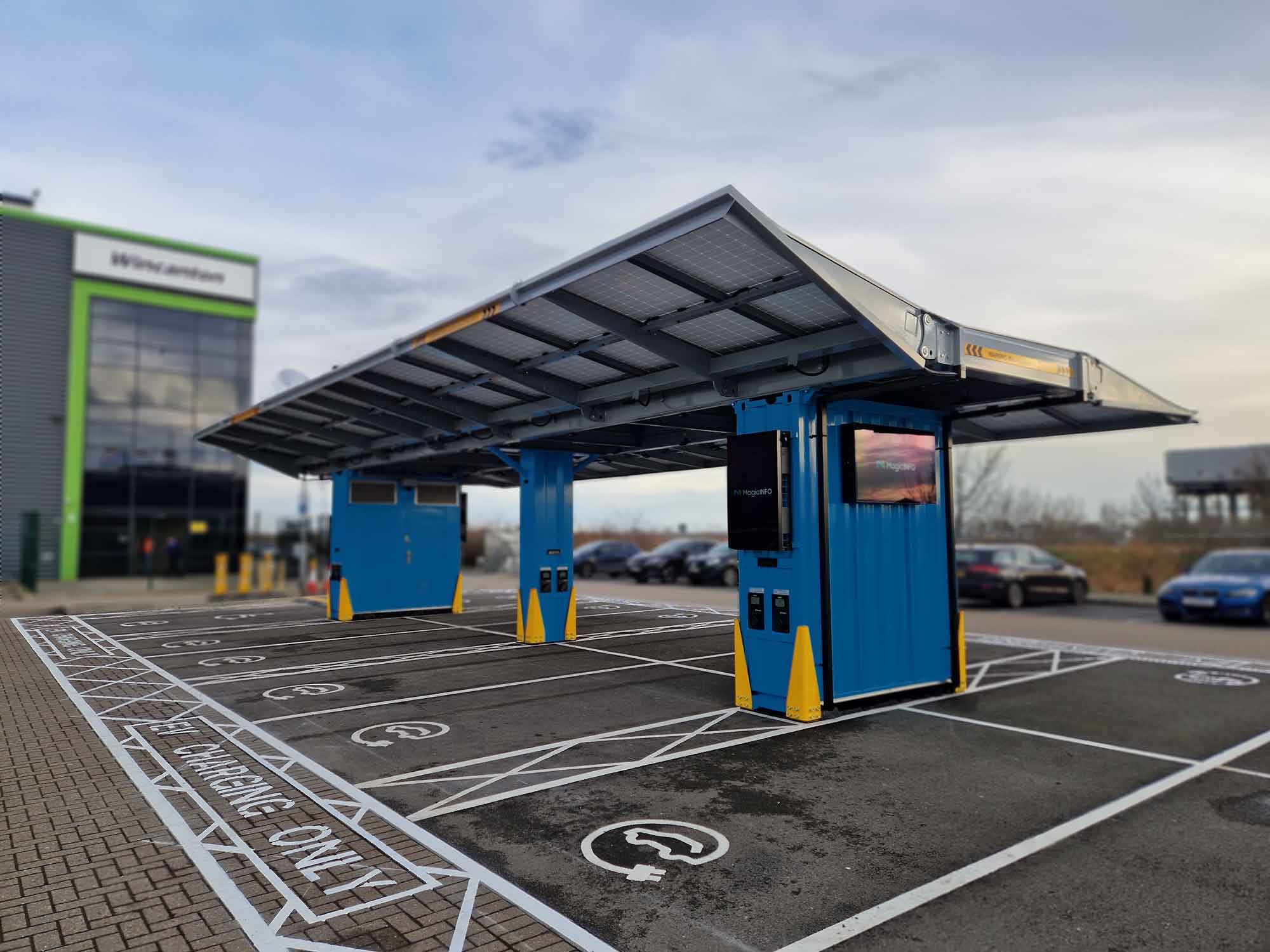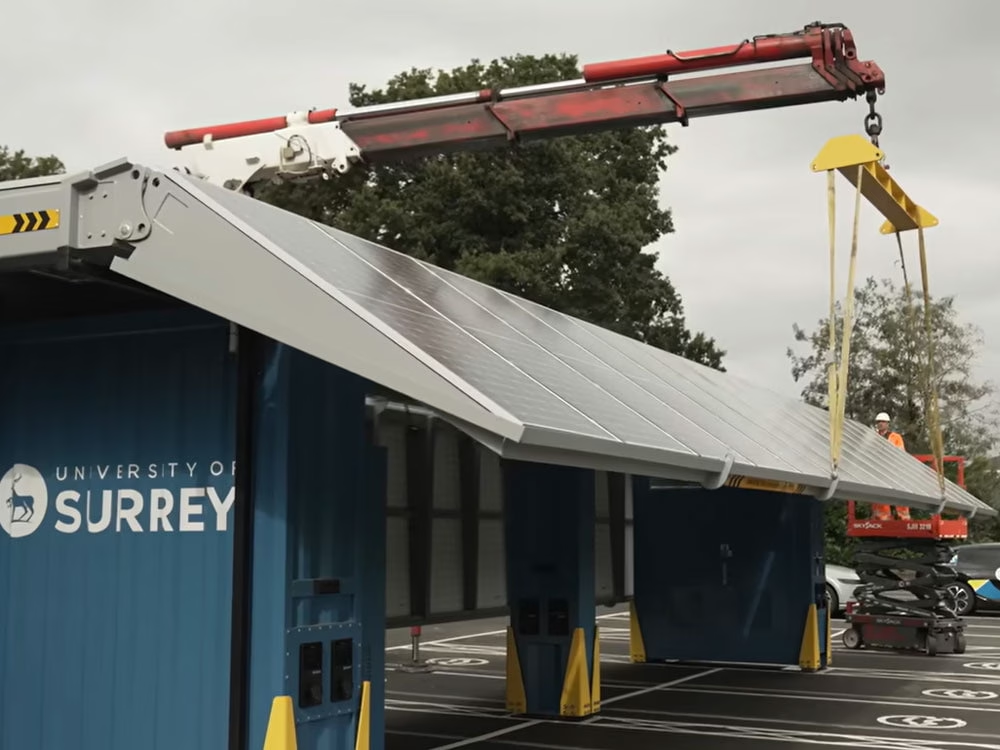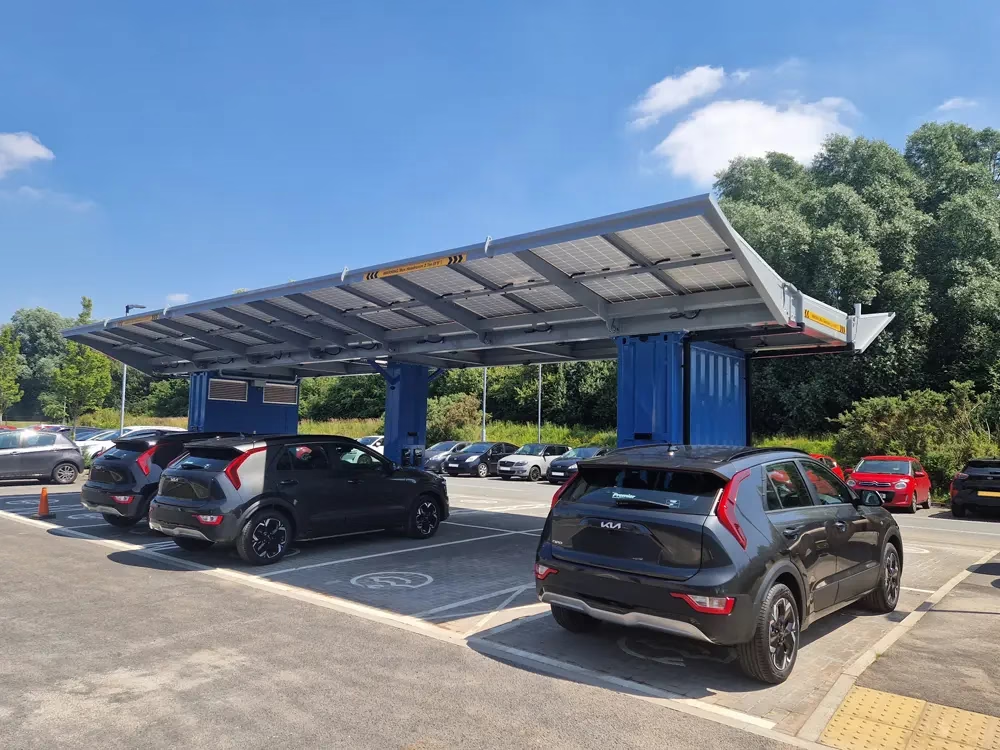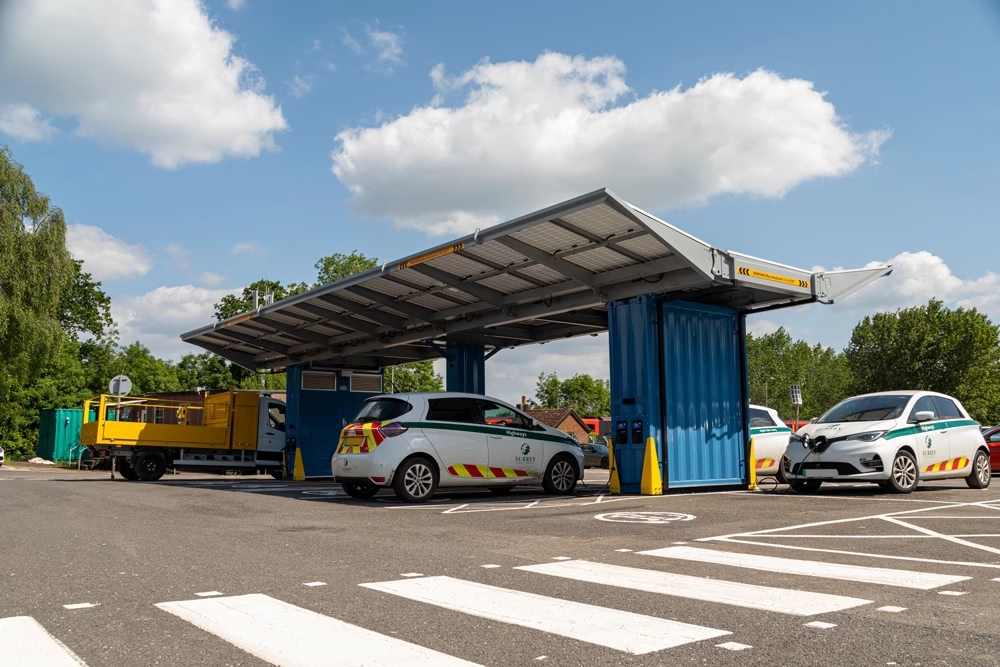It’s Not a Lack of Power That’s Slowing the EV Rollout, It’s a Lack of Understanding
By Alex Tupman, CEO of 3ti
The national conversation around EV charging is missing the point. Instead of fixating on how many rapid or ultra-rapid chargers the UK needs, we should focus on delivering solar powered EV charging infrastructure that’s accessible, cost-effective, and aligned with real-world driver behaviour.
Let’s be clear — the UK doesn’t lack power. It lacks charging foresight. What’s needed is a shift away from outdated “petrol station” mindsets. EV charging shouldn’t mean stopping to charge. It should mean charging while you’re stopped.
Most vehicles are parked 95% of the time. That’s the moment to plug in.
Rethinking EV Charging Infrastructure
At 3ti, we believe in transforming where and how EV drivers charge. Our Papilio3 Solar EV Charging Hub is designed for workplaces, public destinations, and fleet depots — where dwell times are longer and sustainable charging makes sense.
With 12 x 22kW AC chargers, integrated solar generation (~18MWh per year), and rapid deployment in under 8 hours — Papilio3 provides a solar powered EV charging solution that doesn’t require a new grid connection.
Why Fast Isn’t Always Best
High-powered DC chargers have their place, but they’re not the only solution. The average EV now has a range of around 250 miles — more than enough for daily use. Most drivers don’t need a 350kW top-up while buying an overpriced sandwich. They need reliable, lower-cost charging where their vehicle naturally parks — at work, shopping centres, or public destinations.
Meanwhile, many “up to 7kW” public charge points underdeliver, especially in urban areas. For the nearly 50% of UK residents who can’t charge at home, that’s simply not good enough.
Solar Powered Workplace and Destination Charging is the Solution
If you can’t charge at home, the next best option is charging at work or during routine visits — powered by on-site solar energy.
That’s where Papilio3 comes in. Unlike conventional infrastructure that depends on costly grid upgrades and lengthy construction, Papilio3 delivers:
Workplace EV charging that supports ESG targets and employee adoption
Public destination charging that increases dwell time and enhances green branding
Fleet EV charging infrastructure that minimises downtime and reduces fuel costs
OPEX-based rental options, making the solution financially accessible
Papilio3 also addresses a key infrastructure barrier: limited grid capacity. With solar powered EV charging and optional battery storage, it enables rapid deployment at both permanent and temporary sites — without new grid connections.
The Bigger Picture: Charging on Sunshine
We should be inspired by forward-thinking legislation — like France’s mandate to install solar canopies on all large car parks by 2027. The UK has over 30,000 car parks with more than 13 million parking spaces.
Even converting just 20% of these into solar powered EV charging hubs could generate around 7TWh of clean electricity — enough to replace the UK’s last coal-fired power stations.
Papilio3 offers a scalable, solar-supplemented, and resilient way to electrify UK parking. Every new hub moves us closer to the 2030 ICE vehicle ban, the 2050 net zero target, and a more sustainable, self-sufficient energy future.
Let’s Rethink What Progress Looks Like
We don’t need to wait for more grid capacity or continue debating the national rapid charger count. We need to start installing solar powered EV charging infrastructure — where it’s needed most: at the point of parking.
Related: Watch how Bentley Motors deployed Papilio3 at their Crewe headquarters →
Ready to make your workplace or destination EV-ready? Talk to our team →
3ti is the UK’s leading designer, installer and operator of smart solar EV charging infrastructure. Our mission is to decarbonise transport through the use of our ‘3’ core technologies – solar, storage and EV charging.
About 3ti
At the heart of our offering is Papilio3, our patented, free-standing Smart Solar EV Charging Hub.
Designed for workplace and destination car parks—including retail outlets, offices, hospitals, and leisure facilities—Papilio3 supports locations where vehicles are typically parked for a few hours, making it ideal for staff, visitors, customers, and fleets.
Papilio3 gives site owners control over charging tariffs and benefits from on-site solar generation of around 18 MWh per year, a potential saving of 3.6 tonnes of CO2 annually.
Papilio3 can be deployed even on sites with limited grid capacity, avoiding costly and time-consuming grid upgrades. Papilio3’s intelligent energy management systems operate ‘behind the meter’, a unique capability enabling EV charging in locations where traditional solutions are often not viable.
Our Papilio3 units now span the UK, installed across public, private, commercial and industrial sectors, delivering fast, flexible and low-disruption EV charging infrastructure at scale.
📍 Learn more at www.3ti.co.uk

